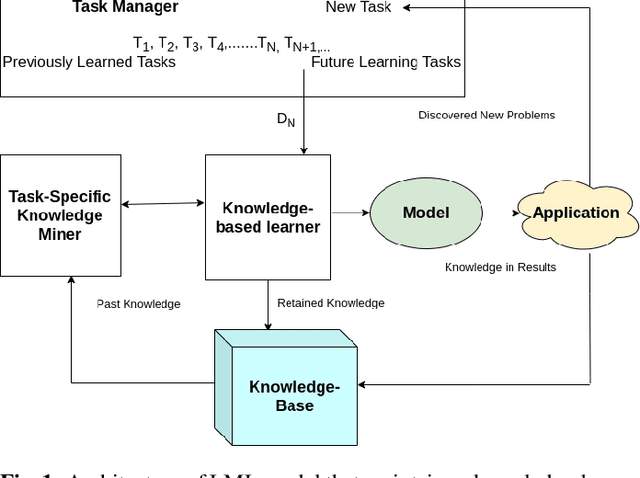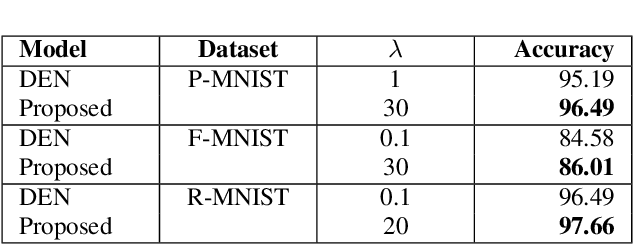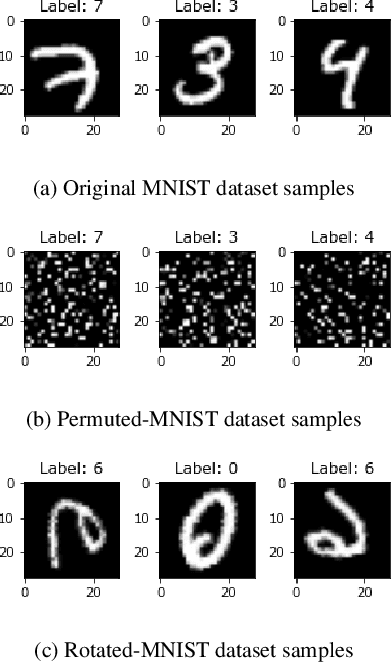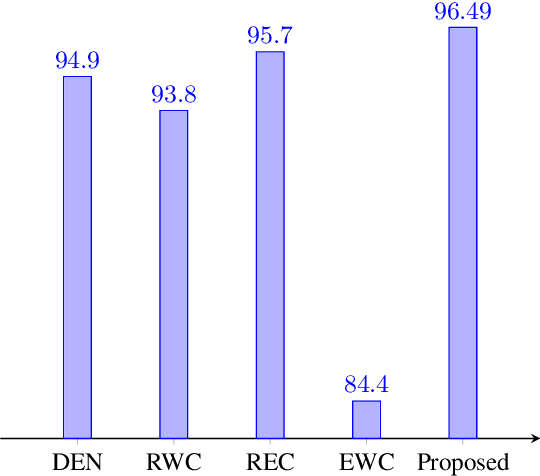Muhammad Taimoor Khan
Effective prevention of semantic drift as angular distance in memory-less continual deep neural networks
Dec 16, 2021



Abstract:Lifelong machine learning or continual learning models attempt to learn incrementally by accumulating knowledge across a sequence of tasks. Therefore, these models learn better and faster. They are used in various intelligent systems that have to interact with humans or any dynamic environment e.g., chatbots and self-driving cars. Memory-less approach is more often used with deep neural networks that accommodates incoming information from tasks within its architecture. It allows them to perform well on all the seen tasks. These models suffer from semantic drift or the plasticity-stability dilemma. The existing models use Minkowski distance measures to decide which nodes to freeze, update or duplicate. These distance metrics do not provide better separation of nodes as they are susceptible to high dimensional sparse vectors. In our proposed approach, we use angular distance to evaluate the semantic drift in individual nodes that provide better separation of nodes and thus better balancing between stability and plasticity. The proposed approach outperforms state-of-the art models by maintaining higher accuracy on standard datasets.
On the Behavioural Formalization of the Cognitive Middleware AWDRAT
Dec 07, 2014Abstract:We present our ongoing work and initial results towards the (behavioral) correctness analysis of the cognitive middleware AWDRAT. Since, the (provable) behavioral correctness of a software system is a fundamental pre-requisite of the system's security. Therefore, the goal of the work is to first formalize the behavioral semantics of the middleware as a pre-requisite for our proof of the behavioral correctness. However, in this paper, we focus only on the core and critical component of the middleware, i.e. Execution Monitor which is a part of the module "Architectural Differencer" of AWDRAT. The role of the execution monitor is to identify inconsistencies between runtime observations of the target system and predictions of the specification System Architectural Model of the system. As a starting point we have defined the formal (denotational) semantics of the observations (runtime events) and predictions (executable specifications as of System Architectural Model); then based on the aforementioned formal semantices, we have formalized the behavior of the "Execution Monitor" of the middleware.
On Formal Specification of Maple Programs
Jul 10, 2012

Abstract:This paper is an example-based demonstration of our initial results on the formal specification of programs written in the computer algebra language MiniMaple (a substantial subset of Maple with slight extensions). The main goal of this work is to define a verification framework for MiniMaple. Formal specification of MiniMaple programs is rather complex task as it supports non-standard types of objects, e.g. symbols and unevaluated expressions, and additional functions and predicates, e.g. runtime type tests etc. We have used the specification language to specify various computer algebra concepts respective objects of the Maple package DifferenceDifferential developed at our institute.
 Add to Chrome
Add to Chrome Add to Firefox
Add to Firefox Add to Edge
Add to Edge